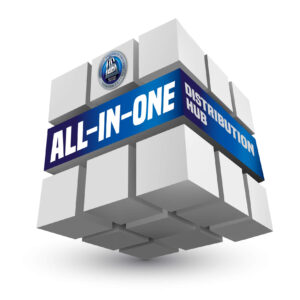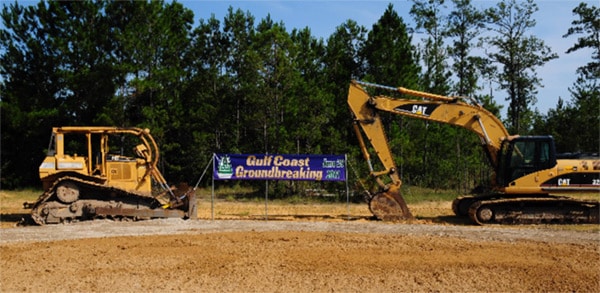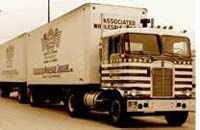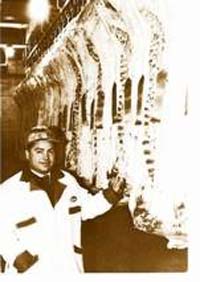Associated Wholesale Grocers is one of the largest grocery wholesalers in the United States and the nation’s oldest grocery cooperative. Founded in 1924 and incorporated in 1926, AWG has enjoyed over 90 years of growth and success. Explore our history by reading through the decades below.

AWG’s growth didn’t slow down to start it’s next decade of existence. In 2016, the co-op celebrated 90 years of serving independent grocery retailers and grew its footprint to over 3,800 stores in 36 states with the successful unification of Affiliated Foods Midwest, which brought about AWG’s newest divisions in Norfolk, Nebraska and Kenosha, Wisconsin. AWG’s expanded footprint increased to 8 million square feet and included eleven modern facilities positioned to serve the midwest, southwest, south, and southeast for decades to come. The expansion also helped push sales to $9.18B.
The greater Chicago area became the location of a substantial amount of growth for AWG in 2017. One of the oldest and largest cooperatives serving independent retailers across the Chicagoland area closed their doors in May 2017 and 254 new stores joined the AWG cooperative. Overall new business growth for AWG in 2017 totaled over 300 stores and nearly $2 billion in additional sales. This meant AWG now served more independent retailers across the country than any other cooperative wholesaler in the United States and reached $9.7B in sales.
In order to continue to maintain the lowest possible cost of operation, AWG also made the determination in 2017 to consolidate its Fort Worth division business into the more efficient and productive Oklahoma City distribution center. Separately, given the sale and subsequent closing of the Fort Worth Distribution Center and the continuing decline in the military channel as a whole, AWG exited its Always Fresh military distribution business, a wholly-owned subsidiary of Associated Wholesale Grocers. To close out a year of transition in 2017, AWG also sold its wholly owned subsidiary, Retail Accounting Solutions, Inc., which had been formed in conjunction with the Affiliated Foods Midwest transaction in October 2016.
Overcoming intense retail competition and continued price deflation, in 2018 AWG reported record consolidated net sales on continuing operations of $9.7 billion. The cooperative launched the new StoreFront retailer member information platform and held its first Innovation Showcase to highlight emerging technologies impacting retail. Product assortment and offerings through AWG and VMC continued to expand and the cooperative model provided ongoing opportunities for members to develop and grow unique and sustainable businesses that survive and thrive in an ever-changing retail environment.
2019 was a year of real progress for AWG and its members. The company had exceptional growth in the high-demand categories of meat, produce, deli-bakery, and foodservices. AWG Brands continued to be an increasingly important competitive tool for AWG members, launching 275 exciting new products with great consumer acceptance.
Amid the COVID-19 global pandemic, 2020 was a year of overcoming obstacles for both AWG and the entire world. Not only did the company report record consolidated net sales of $10.6 billion, but they also pivoted quickly in early 2020 to meet the COVID-19 driven needs of its members. Achieving the ideal was elusive as unprecedented consumer demand overwhelmed inventories, supply, personnel, and the time required to get the job done. However, AWG collectively achieved more than ever before, redefined their potential, and received appreciation for their role as America’s critical infrastructure.
2020 was also a year of expansion for AWG. In June, the company announced the launch of their new all-in-one (AIO) distribution hub in Hernando, Mississippi, a state-of-the-art distribution facility featuring automation technology to optimize productivity and accuracy, while supporting long-term, sustainable growth and success for all AWG member-retailers. The Great Lakes Division in Kenosha, Wisconsin expanded its freezer warehouse by 50,000 square feet, resulting in the addition of 15 dock doors, 14% increase in freezer capacity, and improved employee facilities. The Nashville Division in Goodlettsville, Tennessee expanded its freezer space by 40,000 square feet, leading to 1,300 additional pick slots.
In 2020, AWG introduced a licensed banner for small format, curated assortment, value concept stores called Price Cutter. This concept was designed for AWG member-retailers to capitalize on this trend within the markets they serve. AWG licensed five stores for the beta-test in 2020, and those member-retailers have been working with the company to refine the concept and achieve the goal of creating a turn-key solution.
In 2021, the company began a multi-year journey to significantly approve their member retailers’ ability to compete favorably in the markets they serve. It’s a process uniting the power of AWG and the collective strength of the cooperative members, called Convergence. The objective of Convergence is to perform more like a $22 billion retail chain while preserving and enhancing the independent members' unique and local advantages that differentiate their stores from the competition.
AWG’s Convergence Initiatives focus on three key areas:
In July 2021, AWG announced the opening of its ninth division in St. Cloud, Minnesota. The Upper Midwest Division serves AWG member-retailers in North Dakota, South Dakota, Minnesota, Iowa, and Wisconsin. AWG broke ground in October 2021 on an ultra-modern 330,000-square-foot fresh and frozen warehouse. Combined with nearby existing ambient space in St. Cloud that AWG operates, the Upper Midwest Division has more than 650,000 square feet of warehouse space to accommodate the full array of products AWG member stores will need.
The unique configuration of the Upper Midwest Division was designed to allow AWG to move into the market expeditiously, offering savings to its first member while also allowing the site to be prepared for future expansion and ambient automation. The Upper Midwest Division began shipping from the existing ambient warehouse in Q1 2022 and from the fresh and frozen warehouse in Q3 2022. The migration of existing members from the Great Lakes and Nebraska divisions began in Q1 2023, utilizing more of the building’s available capacity and saving those members millions annually in freight costs.
Another Convergence Initiative that launched in 2021 was in full swing in 2022: Category Initiatives, which are designed to help member retailers win at shelf by having the right product in the position, at the right price, and driving sales exceeding peer retailers’ performance. In 2022, fifteen initiatives across the center store and VMC demonstrated the success of Assortment Optimization outlined in the Convergence project.
Also in 2022, AWG launched the AWG Partner Gateway (APG) as part of the Convergence initiatives of enhancing technology capabilities. APG provides the benefits of next-generation category management capabilities to member stores to compete with the nation’s most sophisticated merchant organizations. Market-leading retailers have come to rely on cross-solution data integration to provide real-time insight to aid decision-making and identify new growth opportunities. These analytics and insights are now more readily available via APG’s integrated data and analytical tools.

In 2007, AWG acquired its newest distribution center in Fort Worth, Texas. The facility was AWG’s largest at the time, at 1.1 million square feet, and served members in Texas, New Mexico, and Louisiana. Also in 2007, AWG built a brand new, state-of-the-art distribution center in Oklahoma City, Oklahoma. Having outgrown the previous warehouse, AWG built this 800,000 square foot facility to better serve its members in Oklahoma, northern Texas, and southern Kansas.
As in previous decades, sales in 2010 continued to increase – from $4.95 billion in 2006 to $7.25 billion. The year marked the 56th consecutive year that AWG paid its members a dividend. Also in 2010, sales of AWG Brands products reached the $1 billion mark for the first time.
In 2011, AWG broke ground on its newest division in Pearl River, Louisiana. The new Gulf Coast Division was built to provide great accessibility and low cost delivery of groceries to independent retailers in Louisiana, Texas, Mississippi, Alabama, Georgia, and Florida. AWG achieved record sales in 2011 of $7.77B.
In 2012, AWG completed a 30,000 square foot expansion of its headquarters in Kansas City, KS. The newly expanded complex houses over one-thousand employees, including the AWG corporate office and the Kansas City distribution center, as well as employees from the Valu Merchandisers Company subsidiary formerly located in Kansas City, Missouri. Sales in 2012 reached $7.85B, another record year for AWG.
AWG's Gulf Coast division in Pearl River, Louisiana, began shipping product on January 20, 2013. This new ground-up distribution center serves over 300 stores in Texas, Louisiana, Mississippi, Alabama, Georgia, and Florida. The 720,000 square foot complex, which sits on 68 acres with direct access to I-10, I-59, and I-12, was built to Miami-Dade hurricane specifications with two tornado/hurricane safe rooms for employee and visitor protection. The Gulf Coast division helped AWG sales in 2013 increase to $8.38B.
Sales in 2014 once again reached a record high, at $8.93B as AWG member retailers concentrated on meeting the needs and expectations of their retail customers. AWG also set an all-time low cooperative operating expense, demonstrating productivity increases in operations. The year of 2014 also marked a milestone in the history of AWG with the retirement of Chairman, Bob Hufford, who had served on the AWG board since 1985. Barry Queen became Chairman of the Board succeeding Bob Hufford.
AWG recorded another record year in 2015, reaching $8.94 billion in sales. Also in 2015 the company celebrated the 20th anniversary of both the Oklahoma City Division and AWG’s wholly-owned subsidiary, Valu Merchandisers Company (VMC). At the end of March 2015, DGS-Acquisitions, LLC, an affiliate of AWG acquired the assets of seven stores in the Des Moines, Iowa area. Jerry Garland, AWG President and CEO, retired in 2015 as well, and David Smith became AWG’s thirteenth President and CEO.

AWG enjoyed the most dynamic growth in its 80+year history during these ten years. Sales grew from $3.1 billion to $4.95 billion – a 60% increase. This growth came from a combination of three things: new members, acquisition of new distribution centers, and an increase in store sales from existing members.
In 2003, AWG expanded into the southeastern United States with the acquisition of two grocery distribution centers: a 737,000 square foot facility in Goodlettsville, Tennessee and a 675,000 square foot warehouse in Southaven, Mississippi. These facilities have added to AWG’s profitability through increased sales and they continue to bring new members into the AWG family.
The 2003 acquisition also included a distribution center in Memphis, Tennessee now operated by AWG’s Valu Merchandisers (VMC) subsidiary. VMC supplies general merchandise and specialty foods to its customers from their Memphis facility and healthy and beauty care products from its Fort Scott, Kansas warehouse. Increased sales usually bring improvements in profitability, and that’s exactly what happened during this time period. AWG’s financial picture had never been stronger.

AWG growth continued through acquisitions. AWG members bought 40 Food Barn stores and 29 Homeland stores, and the former Homeland warehouse in Oklahoma City became AWG’s third division. In 1995, Valu Merchandisers, AWG’s wholly-owned subsidiary supplying health and beauty care products and general merchandise, came on line offering a selection of more than 12,000 items from its 219,000 square foot facility in Fort Scott, Kansas.
Store development continued with the Sun Fresh and Apple Market concepts gaining acceptance as consumer demand for variety in perishables increased. The Best Choice Save-A-Label program was introduced, with over 3,000 charitable organizations participating. With a product line of more than 1,589 items, AWG brand sales topped $374 million in 1996.
The addition of 100 docks and 296,676 square feet to the Kansas City warehouse brought AWG’s combined warehouse space to more than 2.3 million square feet. Sales for 1996 topped $3 billion for the first time.

AWG’s purchase of 20 Kroger stores and subsequent sale of these stores to its members ushered in this decade of growth. During this time, the company developed Price Chopper/Price Mart and Country Mart formats to give retailers a store format to satisfy a price conscious public. AWG also launched Always Save and Best Choice to give all AWG member retailers the opportunity to provide private brand alternatives to national brand products, another tool to serve price conscious consumers. These value brands and alternatives to national brands were an immediate success. One of the first Price Chopper stores was so busy that the Kansas City Fire Marshall (on several occasions) ordered the doors closed due to overcrowding.
As consumers began spending more money at restaurants (38 cents of every food dollar), retailers searched for a way to satisfy the public demand for convenience and ready-to-eat items. This brought about the addition of the bakery-deli department at AWG, and the first Price Chopper to offer these departments opened in 1985.
Warehouse improvements included the installation of an automated produce area in the Kansas City facility and an automated order carousel in the Springfield warehouse that could process orders for eight stores simultaneously. By 1980, warehouse space topped more than 1.2 million square feet, and the company had reached its first $1 billion in sales.

This decade heralded the rise of AWG — retailers were becoming aggressive. They began remodeling stores, and learned that using merchandising and operating techniques supported by AWG employees could benefit their stores.
The world became more price conscious than ever before, and AWG retailers delivered what the customer wanted. Computer technology found its way into the grocery business. In 1966, Electronic Data Processing was touted as a means by which to simplify routine tasks, including the elimination of out-of-stocks. Three years later, drop boxes and order sheets became a way of the past when an automated ordering system allowed stores to transmit their orders over telephone lines in just three minutes. A few years later, the first Universal Product Code (UPC) was rolled out which led to the arrival of checkout scanning in 1974. The revolution had started.
By the end of the decade, AWG had two new warehouses. In Springfield, a 300,000 square foot facility was built to replace the one destroyed by fire in 1970, and in Kansas City the long-awaited 565,000 square foot office and warehouse complex was ready for occupancy in 1972.

In the late 1950s, the real benefit of being an AWG member was realized. This came about as the result of a new pricing structure. With 3% over invoice pricing, for the first time in AWG’s history retailers could buy groceries at a price that would enable them to compete with the chains. As the company grew and more retailers joined the cooperative, the need for more space became critical.
In 1956, AWG moved from the warehouse it had occupied for more than two decades across the state line into a 200,000 square foot facility in the Fairfax District in Kansas City, Kansas. The 7,500 square foot freezer stocked 400 items which were packed in insulated chests and loaded on dry grocery trucks for delivery to stores.
In Springfield, a 200,000 square foot warehouse was built to serve the needs of a growing customer base in Southwest Missouri and Arkansas. During this decade, the pace of life at AWG changed. The focus on selling groceries and supporting retailers led to the establishment of several new departments. The Cash & Carry department where retailers could buy single and half case amounts was started, the controlled-label program began; produce, fresh meat and health and beauty care became available from the Kansas City warehouse.

The decade after the war was defined by the boom of suburbia, the strip center and the supermarket. The evolution from service to self-service continued with the typical store offering 4,000 items. During this time, AG began its own evolution. In 1953, the company name was changed to Associated Wholesale Grocers, Inc., (AWG) and the following year, AWG paid its first year-end patronage of $20,441 to members. Prior to 1954, members had received dividends on their stock, usually from $3-$6 per share. The rebate was definitely a better deal.
Despite the increasing presence of independent retailers, chains continued to dominate. In an effort to provide its retailers with greater name recognition, the Mr. AG stores advertising program began, but it wasn’t enough to make much difference. The chains offered such low prices that AG retailers often sent their wives to shop the chains’ weekly specials and then resold the items in their own stores.

The late 1930’s were a time of expansion for AG with the purchase of two warehouses. The first, the Associated Grocers warehouse in Joplin, Missouri came in 1936. Two years later, AG purchased all the merchandise from the bankrupt United Grocers, Springfield, Missouri warehouse for $200 a month. These two facilities enabled AG to expand its service coverage area throughout southern and southwest Missouri and into eastern Kansas. AG’s sales force began soliciting business beyond the metro areas.
Chain stores still dominated most markets, but independents with strengthened buying and advertising power were gaining. The Thriftway group began, and AG stores participated in daily radio advertising with a weekly budget of $178. Independents continued to offer services like credit and delivery to gain an edge on the chain stores.
While the three floor warehouse in Kansas City was thought to be the ultimate, order picking was slow with waits for the elevator commonplace. Stores phoned their weekly orders in on Thursday with scheduled pickups for the following Friday. If an order wasn’t ready when a store owner came to get it, he would go into the warehouse and pick his own order. No one had the luxury of time to wait for the order or to make another trip to the warehouse. Delivery service was available through Superior Trucking, but since there was a charge, many owners chose to pick their own stock.

AWG’s history dates back to 1924 when a group of 20 independent grocers met for the first time to discuss the advantages of combining their buying and advertising power. Competition was fierce in those days with national chains dominating the grocery scene. Independents struggled to compete, and a cooperative effort was viewed as the only way in which to gain market strength. For two years, the group bought collectively and stored their wares in the back of a store owned by J.C. Harline at 39th and Troost in Kansas City, Missouri.
The cooperative was a success, so in March, 1926, Articles of Incorporation were filed and Associated Grocers of Kansas City (AG) formally began. The company’s first official warehouse was located on the second floor of the Morehead Grocery Company, at 3842 Troost. Rapid growth necessitated a move in 1928 to the W.E. Murray Transfer and Storage Company where AG occupied the fourth and fifth floors.
In 1930, the company moved again, this time to a former mattress factory on 23rd Street. The 16,000 square foot warehouse allowed AG to supply its members with a full variety of products. With three floors, a basement and their own elevator, the company had room to offer more lines of product — apparently too many, because in late 1932 disaster struck. A floor joist broke and the third floor of the warehouse settled on the first floor as the second floor collapsed. The search for a new AG warehouse was again necessary. A new 3-story brick and concrete building at 19th and Troost was leased and became AG’s home from 1933 until 1956.